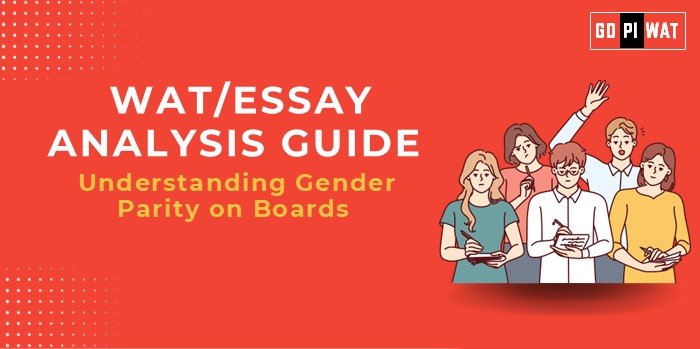📋 Understanding Gender Parity on Boards
Context Statement: Gender parity in corporate boards aligns ethical governance with economic gains, providing a unique lens to evaluate inclusivity in leadership.
📝 Effective Planning and Writing
- Time Allocation:
- Planning: 5 minutes
- Writing: 20 minutes
- Review: 5 minutes
- Preparation Tips:
- Gather key statistics and global case studies.
- Highlight benefits of diversity and address counterarguments (e.g., tokenism, pipeline).
🌟 Introduction Techniques for Essays
- Contrast Approach: “Despite Norway’s success in achieving 40% female representation on boards, globally, women hold only 26% of such positions, reflecting an unfinished journey toward parity.”
- Solution-Based Approach: “Mandating gender quotas in boards could fast-track parity, but addressing pipeline issues and cultural resistance is equally essential.”
🔍 Structuring the Essay Body
1. Achievements:
- Enhanced financial performance (25% more profitability).
- Reduced groupthink and increased innovation.
- Global examples like Norway, Germany, and France demonstrate legislative success.
2. Challenges with Comparative Analysis:
- Tokenism and superficial compliance.
- Limited leadership pipeline due to historical biases.
- Cultural resistance, especially in developing economies like India.
3. Future Outlook:
- Promoting capacity-building programs to groom women leaders.
- Implementing mentorship and education initiatives alongside legal quotas.
🎯 Concluding Effectively
- Balanced Perspective: “Gender quotas on boards are essential but must be complemented with efforts to build a sustainable talent pipeline, ensuring long-term inclusivity and merit-based leadership.”
- Global Comparison: “While legal mandates in countries like Norway and France have showcased success, a tailored strategy addressing cultural and systemic challenges is key for countries like India.”
📊 Analyzing Successes and Shortcomings
- Key Achievements: Improved financial metrics, diverse decision-making, ESG benefits.
- Ongoing Challenges: Tokenism, leadership gaps, resistance to change.
- Global Context: Quotas in Norway (40%) vs voluntary measures in the US (26% representation).
🚀 Recommendations for Sustainable Progress
- Implement Legal Quotas: With a phased approach to allow companies to adapt.
- Leadership Development Programs: Encourage training and mentoring for women leaders.
- Cultural Reforms: Promote awareness about the economic and ethical need for diversity.
✍️ Sample Short Essays
Essay 1: Balanced Perspective (100 words)
Gender parity on corporate boards is crucial for fostering diverse perspectives, improving governance, and driving profitability. While quotas can fast-track progress, concerns about tokenism remain valid. The long-term solution lies in combining quotas with capacity-building initiatives, leadership training, and cultural transformation to ensure qualified, merit-based representation.
Essay 2: Solution-Oriented (100 words)
To address gender disparities in corporate leadership, implementing quotas is essential but insufficient alone. Governments and companies must invest in leadership development programs, mentoring initiatives, and inclusive hiring practices to groom women for board positions. Examples from Norway and France highlight the potential success of such strategies when tailored to local contexts.
Essay 3: Global Comparison (100 words)
Countries like Norway and Germany have successfully achieved significant gender parity through legal mandates, showcasing the role of policy in driving change. However, countries like India face additional challenges, such as cultural biases and pipeline gaps. A hybrid approach—combining legal quotas with systemic reforms—can ensure both immediate results and long-term inclusivity.


